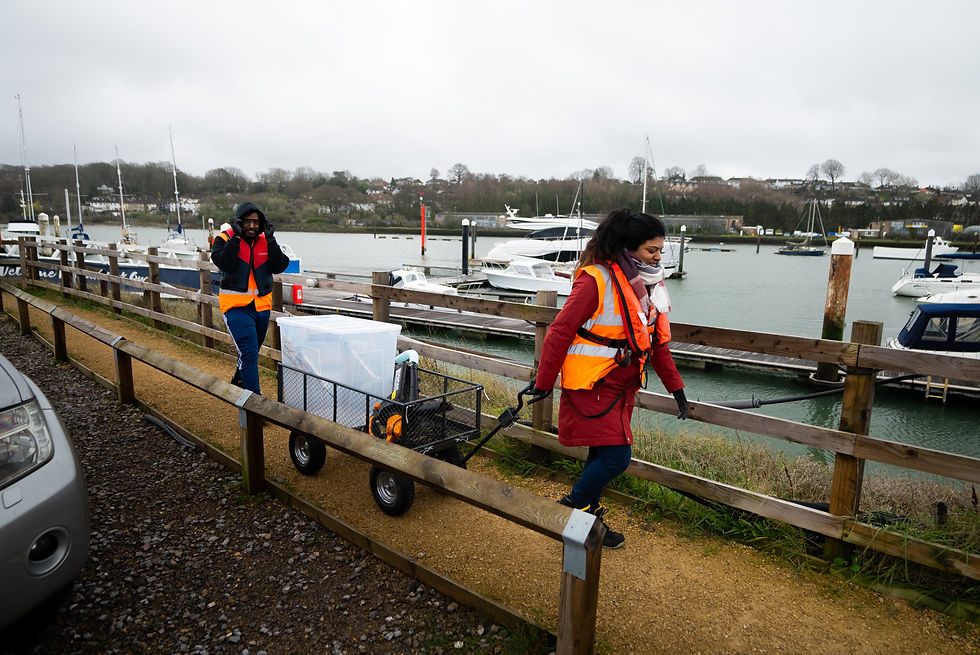Using the Venturi Effect
- Nurdle GDP
- Feb 22, 2023
- 2 min read
By Ellie Winterburn
The venturi effect is where the pressure in a fluid decreases as it flows through a narrow section (choke) of a pipe. The image below shows how this effect can be used to pick up material by creating a low-pressure area in the outlet of the venturi nozzle. This creates a pressure difference which draws material into the tube.

Venturi vacuum generator [1]
However, the venturi vacuum generators with this design that are commercially available have a product inlet of just a few millimetres which is not ideal for clearing up kilometres of beach quickly!
We were still keen to make use of compressed air conveying systems due to their many benefits including:
· Nurdles can be delivered directly into the separation stage of the machinery
· Doesn’t require a filter
· Energy efficient
· Produces a high vacuum and large flow to move material easily
· Will not clog as air flow is straight through design
· Simple configuration
· Doesn’t generate heat
· Doesn’t require electricity
· No moving parts
· Low maintenance
After pondering for quite some time about how we may be able to use the venturi effect in our collection equipment we came across a component called the Ring Vac. This product is used for conveying material such as bottle caps for bottling and plastic pellets used in injection moulding. It is commercially available in a range of diameters from 5mm up to about 12cm so is much more suitable for picking up the quantities of nurdles we require. The diagram below shows the component in use, where compressed air is supplied by the blue tube. It is compressed further inside the component, creating an area of low pressure which draws material through it.

Ring Vac [2]
The image below shows in detail how the component works.

How it works [3]
Once all the parts arrived, we couldn’t wait to put everything together and get to the lab to test it out! The picture below shows the set-up of the equipment where compressed air is supplied to the component through the yellow tube. The low-pressure area is generated inside the ring vac component and nurdles are drawn up through the blue tube and are collected in the box on the left.




Comments